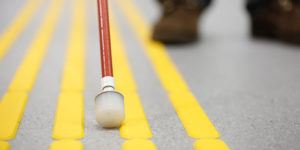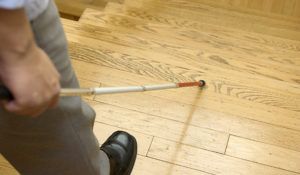
When testing the contrast ratio of surfaces for compliance under Australian Standards AS 1428.1 & AS 1428.4.1 it is essential that the correct geometric equipment is used by the testing company. This is to ensure correct results are obtained, and to reduce the risk of future litigation should a case be brought before the court.
When shopping around for a company to conduct luminance contrast testing for your building materials, be careful, as not all testing companies use compliant equipment. For more information on what equipment should be used see the blog on our website https://www.disabilityaccessconsultants.com.au/luminance-contrast-equipment-equations/
Even though the testing equipment used may be compliant, what is not mentioned in the Australian Standards and is of great significance in terms of luminance contrast is Specular Inclusive and Exclusive measurements. Compliant equipment used for luminance contrast testing relies on one particular method of measurement: specular inclusive.

So, what determines which rays are reflected and which are scattered? It comes down to the texture and glossiness of the surface. A smooth shiny surface will reflect more light, and a rough matt surface will scatter more light. For example, a glossy yellow sample will appear more vivid to the naked eye as opposed to a sanded yellow sample. Why does it matter? Yellow is yellow right? Well, yes, to some degree. This is why current compliant testing equipment use a Specular inclusive measurement mode, which captures the true colour of a material regardless of its surface finish. This is achieved by “including” both reflected and scattered light when measuring.
Specular inclusive testing is seen as the best way to test for luminance reflection because it removes any variances of the surface’s condition. So, if we tested the glossy yellow sample and the sanded yellow sample using a specular inclusive mode, we would get the same colour value on both samples, meaning they are the “same”.
However, we already know that the surface finish of a material, glossy vs matt, affects the way a colour appears to the naked eye. And the best way to test the visual appearance of a material’s colour is by the specular exclusive mode. This mode does not consider how many light rays are reflected off the surface, making it more sensitive to the finished texture. If we take the previous example of a glossy yellow sample vs a sanded yellow sample, a specular exclusive measurement will return different results or colour values for each sample, meaning they are “different”, which indeed they appear to be.

If appearance measurements are required, then the specular exclusive mode offered by Photometer tests can be performed (Note that these are affected by ambient light). Laboratory tests by Equal Access are Specular Inclusive.